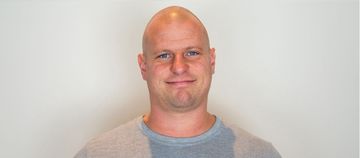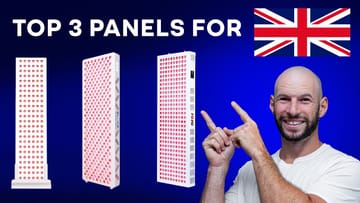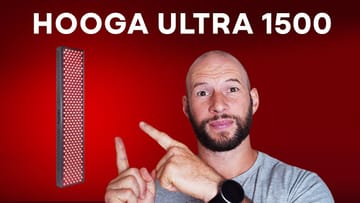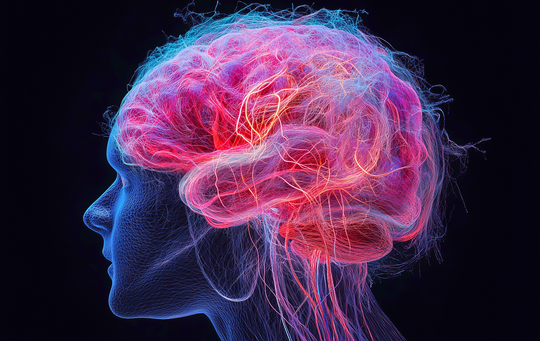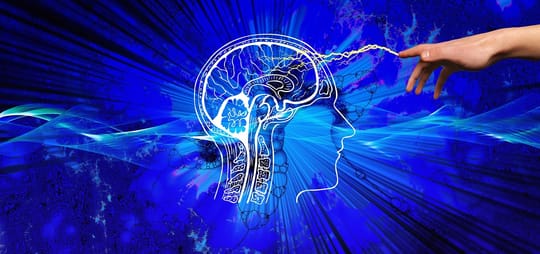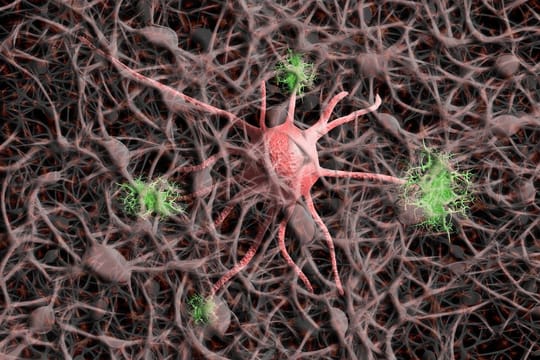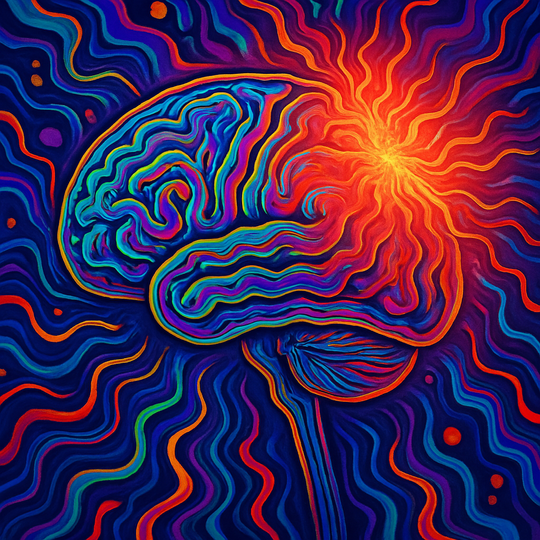Today I'll talk about the red light therapy autism connection. I'll mostly follow conventional science here on this topic - I know many other fringe theories exist on this topic, but for convenience sake I'll stick to the scientific mainstream here.
Let's first talk about the basics of autism. After that, I'll consider light therapy for autism and other topics:
Autism Introduction
Autism is called "Autism Spectrum Disorder" (ASD) in the medical literature. It's complex disease originating in the nervous system that has been studied very extensively (1; 2; 3; 4; 5; 6; 7).
Not everyone is affected the same way by autism - that's why the word "spectrum" is included in its official medical name. Often, though, people with autism have a harder time learning, "Attention-Deficit Hyperactive Disorder" (ADHD), and a higher risk of epilepsy. Anxiety, depression, and sleep problems are also more frequently present.
Autism starts in childhood. There are often signs children are different than their peers and develop differently as well. The diagnosis is made according to the individual's development and observation by medical professionals. Worldwide, about 1% of children are affected but for some nations like the US that number exceeds 2%.
There's no cure for autism. Psychostimulants are often used in case ADHD is present but these often come with side effects. Otherwise, managing symptoms is extremely important for autism, as well as a focus on improving the quality of life. Usually, a team of practitioners is necessary to treat the person with ASD well. Timely interventions do generally enhance the quality of life.
Lately, light therapy for autism has also emerged a potential viable treatment. Today I'll zoom in on this topic:
Different Types Of Light Therapies For Autism
Many different light therapies for autism exist. Some have better scientific evidence going for them, and others worse.
But, to understand how light therapy works you'll have to look at the light spectrum. Different types of light exist. In physics, all types of light are part of the light spectrum (10; 11; 12).
There's invisible and there's visible light. The invisible light that the human naked eye cannot see, is made up of ultraviolet and infrared light. The visible light is made from all the colors of the rainbow, so violet, blue, green, yellow, orange and red.
All these different types of light have different effects on the human body. Some types of light don't just hit your tissues but enter your body - examples are UV light, red, and near-infrared light. When entering your tissues, the light has biological effects there.
Now, there are many types of light therapy for autism:
- Red light therapy for autism - which I'll break down into great detail soon.
- Infrared saunas for autism. Toxin exposure may play a major role in autism, for instance (13; 14; 15; 16; 17; 18). Although I'm not going to consider this topic in detail here, there's very strong evidence that infrared saunas can help you detox some types of toxins. Examples here are phthalates, BPA (a compound used in plastics), heavy metals, and others. Studies need to be executed on this topic though, to observe whether there's a link. And, infrared saunas for autism can also help because they counter depression and anxiety - a frequent symptom. Infrared saunas are akin to near-infrared light therapy autism.
- Sunlight has effects, in part through vitamin D (19; 20; 21; 22; 23). For upcoming mothers, vitamin D might reduce autism risk in early childhood. Vitamin D may also counter autism in childhood and low vitamin D may be a risk factor for developing autism. Please keep in mind here that I'm not advocating for vitamin D supplements here, unless it's very dark in your winter time. Time and time again, studies show far superior results with sunlight exposure over vitamin D supplements. Vitamin D may also counter hyperreactivity in autism.
- SAD lamps to set the circadian rhythm. Once more, sunlight is the way better option but but if there's no good sun available during your wintertime, SAD lamps may play a great role. Your body has a circadian rhythm, a 24-hour day and night cycle. Brightness during the morning tells your body it's daytime and darkness at night tells your body it's time to go to sleep. Morever, it turns out that circadian disruptions, so too much darkness during the day and too much bright light exposure at night, plays a major role in autism as well (24; 25; 26; 27; 28; 29). Get some red LEDs for sleep for a few hours before bedtime as an easy help to boost melatonin and improve the circadian rhythm. An SAD lamp is a light box therapy for autism, for instance.
- Tanning beds, although riskier and the medical mainstream doesn't consider tanning beds safe. Just know that there's a direct link between absence of sunlight exposure and autism risk (30; 31; 32; 33; 34). Tanning beds are a very imperfect replacement of the sun but if you have no other option, you may consider it in a safe way (never getting a sunburn). Again, natural light therapy autism is always best.
So all in all, there are many different light therapy & autism options. I'll consider red light therapy next, in more detail:
Red Light Therapy And Autism: The Latest Research
Lots of research has emerged regarding red light therapy and autism in the last few years (35; 36; 37; 38; 39; 40; 41). The research is not always of the best quality, but I'll do my best to quote a few of these studies.
The first study uses the Vielight device, specifically the Neuro Alpha and Neuro Gamma devices. The Vielight emits red and near-infrared light through the nose (into the blood flow) and through the skull. The outcome was as follows:
"Findings show that [red light therapy applied on teh brain] was associated with a reduction in ASD severity, as shown by a decrease in [hildhood Autism Rating Scale (CARS)] scores during the intervention (p < 0.001). A relevant reduction in noncompliant behavior and in parental stress have been found. Moreover, a reduction in behavioral and cognitive rigidity was reported as well as an improvement in attentional functions and in sleep quality. Limitations were discussed as well as future directions for research." (35)
So, there were huge improvements across the board, although the study setup was imperfect. Hopefully we'll see more studies with a great number of participants in the future.
Then, another study concludes that:
"Social Awareness (-3.0 ± 1.9, p < 0.001), Social Communication (-10.3 ± 6, p < 0.001), Social Motivation (-5.0 ± 2.4, p < 0.001), and Restricted/Repetitive Behaviors (-7.4 ± 4.1, p < 0.001). " all significantly improved. (36).
These domains, such as social awareness and communication are the biggest symptoms and pain points for many people with autism.
A recent review states that red light therapy can have promising effects on autism through many different mechanisms, such as:
"This treatment has been shown in a range of pathological conditions-to improve the key changes that characterise autism, including the functional connectivity and survival patterns of neurones, the patterns of gliosis and inflammation and the composition of the microbiome" (38).
That gut microbiome has become extremely important lately (39). It's scientifically understood that the gut plays a major role in many neurodegenerative diseases now. Whether that's Parkinson's disease or Alzheimer's, Multiple Sclerosis, or Autism, targeting the gut may not only be good for prevention but also as a treatment.
If you're interested in this topic, check out the first product that combines brain and gut treatment simultaneously:
The CERA is an innovative product that treats both the brain and the gut, and therefore focuses on the newly emerging topic of the brain-gut axis - the interaction between brain and gut. Alex Fergus interviews Sarah in the video above.
Lastly, one more study concluded the following, another positive outcome:
"The study found that low-level laser therapy could be an effective tool for reducing irritability and other symptoms and behaviors associated with the autistic spectrum disorder in children and adolescents, with positive changes maintained and augmented over time." (41).
So overall, all studies on red light therapy for autism show positive results. There's just a need for more and better research to fully understand the topic better and to draw more valid and reliable conclusions.
Laser Therapy For Autism
Some preliminary studies also show positive effects of laser therapy for autism (42; 43; 44; 45). Speech and social ability improves in some studies, for instance. However, laser therapy is harder to apply in a residential setting.
And arguably, you get many of the same benefits of laser therapy by applying red light therapy. So overall, I recommend using red light therapy.
Light Therapy And Sound Therapy In Combination
What about combining light and sound therapy for autism? Sound therapy seems to have positive effects on autism in some studies (46; 47; 48; 49; 50). Other studies disagree and claim sound therapy has no effect. But, that conclusion is made because there's insufficient evidence according to some reviewers of all available studies.
Because some studies do show positive effects of sound therapy for autism, I think there's little harm in trying it. The only downside here is opportunity cost, once you opt for a less well-validated therapy, you've got less time to spend on better validated therapies.
Light Therapy As A Potential Treatment For Autism
Light therapy certainly has great treatment potential for autism. For the best results, you'll probably have to combine several options at the same time.
For instance:
- Use red light therapy once daily, but start very slow with a lower dose.
- Ideally, get sunlight exposure in the morning and in the afternoon. The morning exposure is perfect for setting the circadian rhythm. The afternoon exposure is great for building vitamin D, inflammation, blood flow, and many other factors.
- At night, use Red LEDs For A Few Hours Before Bedtime or get some Swanwick blue-light blocking glasses (code FERGUS saves) for the night. You can get kids glasses too at Swanwick. These blue-light blocking glasses prevent blue and green light from entering the eye and help your body increase its melatonin levels.
So what are the best products for autism? For brain-only devices, I'd check out the following videos:
The Neuronic Neuradiant 1070 is a helmet specifically made for brain treatment. Alex makes a preliminary review of this product in this video.
Also, you may want to check out the video Alex created on the Vielight - which I discussed earlier in relation to red light therapy for autism:
Discount code ALEX10 saves you on the Vielight. You may also want to check out Alex Fergus' interview with Dr Lew Lim:
In this video, Alex Fergus interviews Vielight founder and CEO Dr Lew Lim about his products for the brain, and upcoming products.
Also, I recommend watching the following video, for a red light therapy panel - that panel can treat both the brain and the gut:
In this video listed above, Alex compares the best red light therapy panels on the market.
The wall panels I discuss above are amazing for full body treatment as well. Check out the blog version of the red light therapy panel comparison too if you're interested.
Current Treatment Options For Autism
Current treatment for Autism is extremely broad. This ranges from special education to help with self-care, meditation, support on the job market later on, and so forth. Treatment options are extremely complex because so many children are affected. And, early treatment generally helps well into adulthood, which is why a lot is invested in this area.
Red light therapy for autism can work and generally has few side effects. I do recommend getting the aid of a clinician for treatment, as applying red light therapy to the brain is not 100% side effect-free if there's a condition present. You should be able to use red light therapy for autism together with any other autism treatments, however. And, many of these treatments including educational, occupational, mediation, pharmacological, and so forth, should even work well together with red light therapy.
Again, treatment options for autism is an extremely complex topic that I can't fully cover here in a few sentences.
Evidence, Testimonials & Real Life Cases
Yes, you can find many cases online where light therapy for autism works. I'll just zoom in on one case here, which is a mother who uses a light therapy box for autism during the winter months. Here's what she writes about her experience using a light box for autism:
"Since phototherapy requires time and consistency, you should set the light box on a table or desk. In this way, your child can read, use a computer, study, watch TV, or eat while having phototherapy. But parents should stick to a therapeutic schedule – and never overdo it.
Phototherapy doesn’t cure SAD, depression or other conditions, but it often eases symptoms, increases energy levels, and helps the child feel better about himself/herself – and life. Phototherapy can start to improve symptoms within just a few days. In some cases, though, it can take two or more weeks.
Phototherapy isn't effective for every child on the autism spectrum, but parents can take steps to get the most out of it and help make it a success" (51).
I recommend doing some searching on forums and you'll find that many parents have had success with light therapy. Also, keep in mind that the SAD light box is probably not your best option, but great if it's a very dark winter!
Conclusion: The Future Of Light Therapy And Autism
Light therapy for autism seems extremely promising, although more research is needed. Preliminary studies show good benefits that can be life-changing over time. For the best results, it's smart to combine sunlight, red light therapy, and blocking blue light at nighttime.
Frequently Asked Questions:
Below I'll answer a few frequently asked questions:
Can Red Light Therapy Help People With Autism?
Depending on your philosophy on medical research, the answer is "yes" or "no". Some people don't believe that there's evidence unless there are many peer-reviewed high-quality human studies available - in that case, your answer is likely "no".
If you think the promising preliminary studies already yield some evidence, then the answer is "yes". I fall in the latter category and think we can't always wait until (expensive) perfection before drawing conclusions and starting to do some testing.
Why Is Light Therapy Beneficial For Autism?
Many biological effects exist why light therapy is beneficial for autism, such as increased blood flow and vitamin D, better energy production, greater relaxation, enhancement of well-being and counteracting anxiety, and so forth.
Is It Safe to Use Light Therapy For Autism?
I recommend checking out the interview with Dr Randy Beck on red light therapy safety for brain disorders:
Dr Randy Beck makes a compelling case you'll have to be careful with red light therapy for the brain, with brain disorders.
So, to err on the safe side of the equation, let a clinician help you integrate light therapy into the life of a person with autism.
Items Mentioned
- Red LEDs For A Few Hours Before Bedtime
- Vielight Products - code ALEX10 saves
- Neuronic Neuradiant 1070 Helmet - code ALEXF5 saves
- Red Light Therapy Panel Comparison - with wall panels to target big areas of the body
- Cera Thrive - for combined brain-gut treatment. No discount available
This is a post by Bart Wolbers of Lighttherapyinsiders. Bart finished degrees in Physical Therapy (B), Philosophy (BA and MA), Philosophy of Science and Technology (MS - with distinction), and Clinical Health Science (MS), has had training in functional medicine, and is currently chief science writer.
